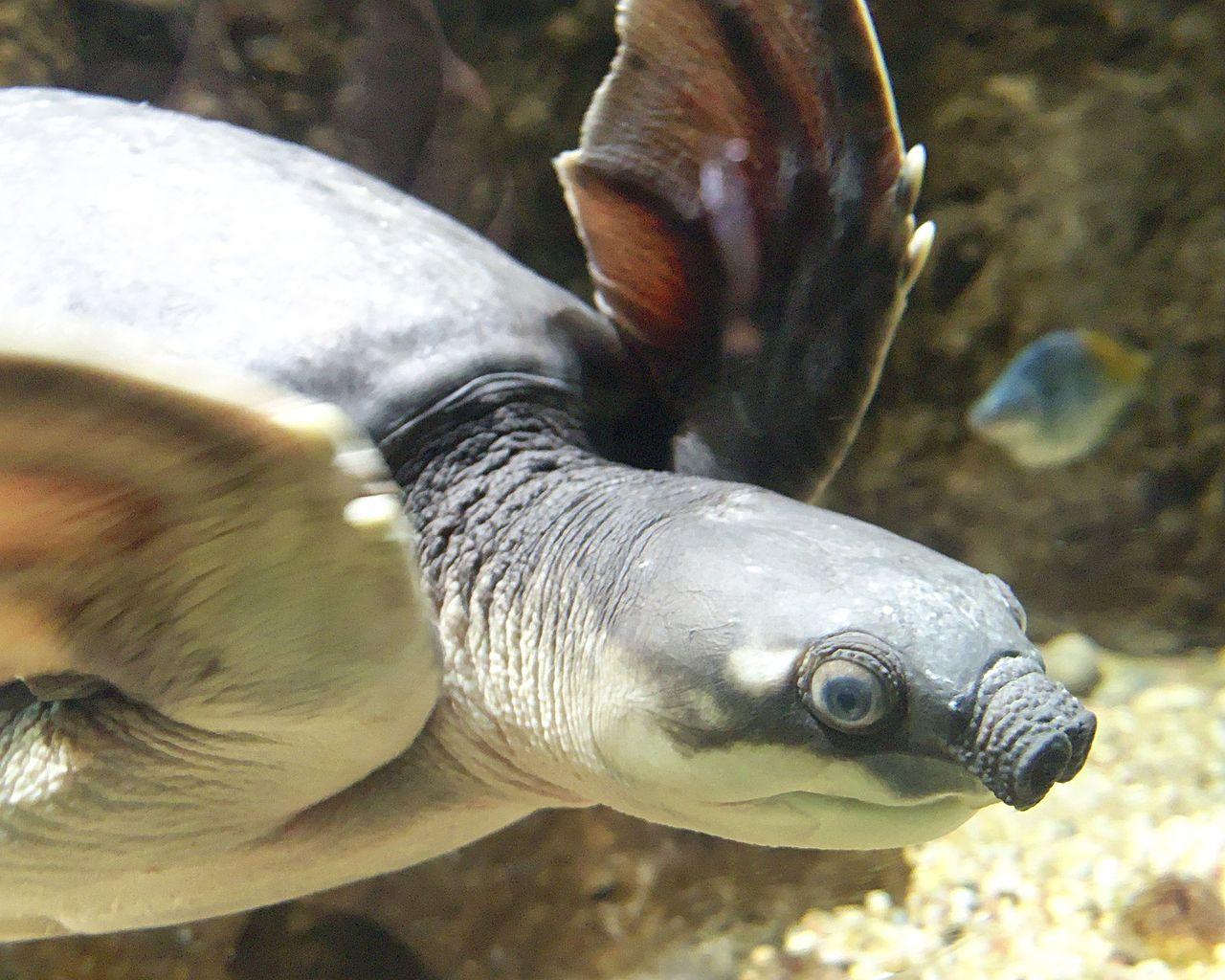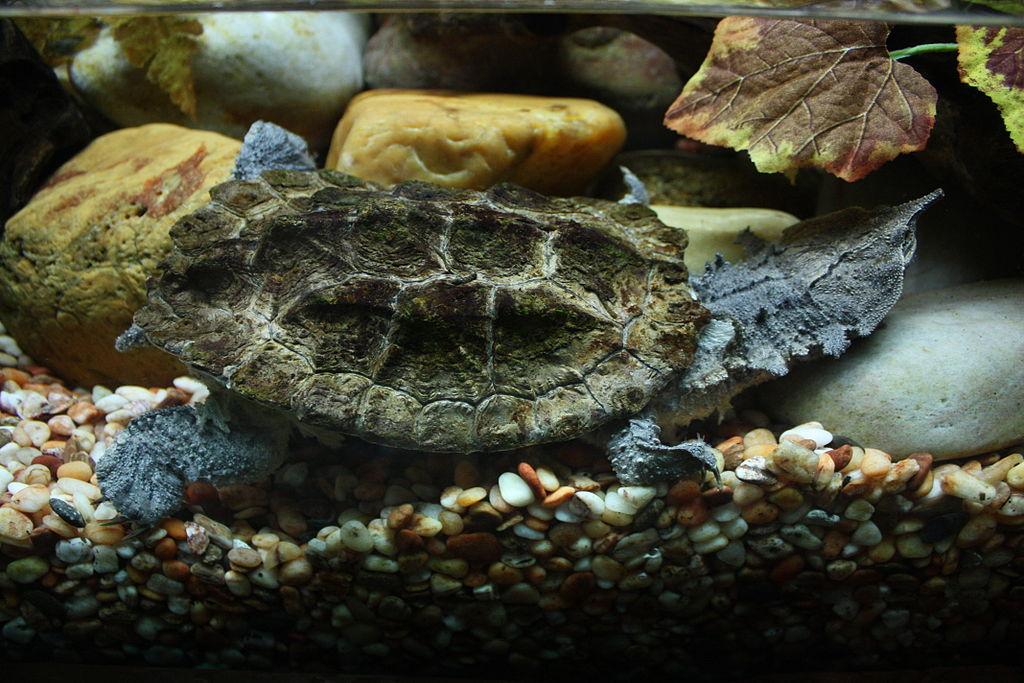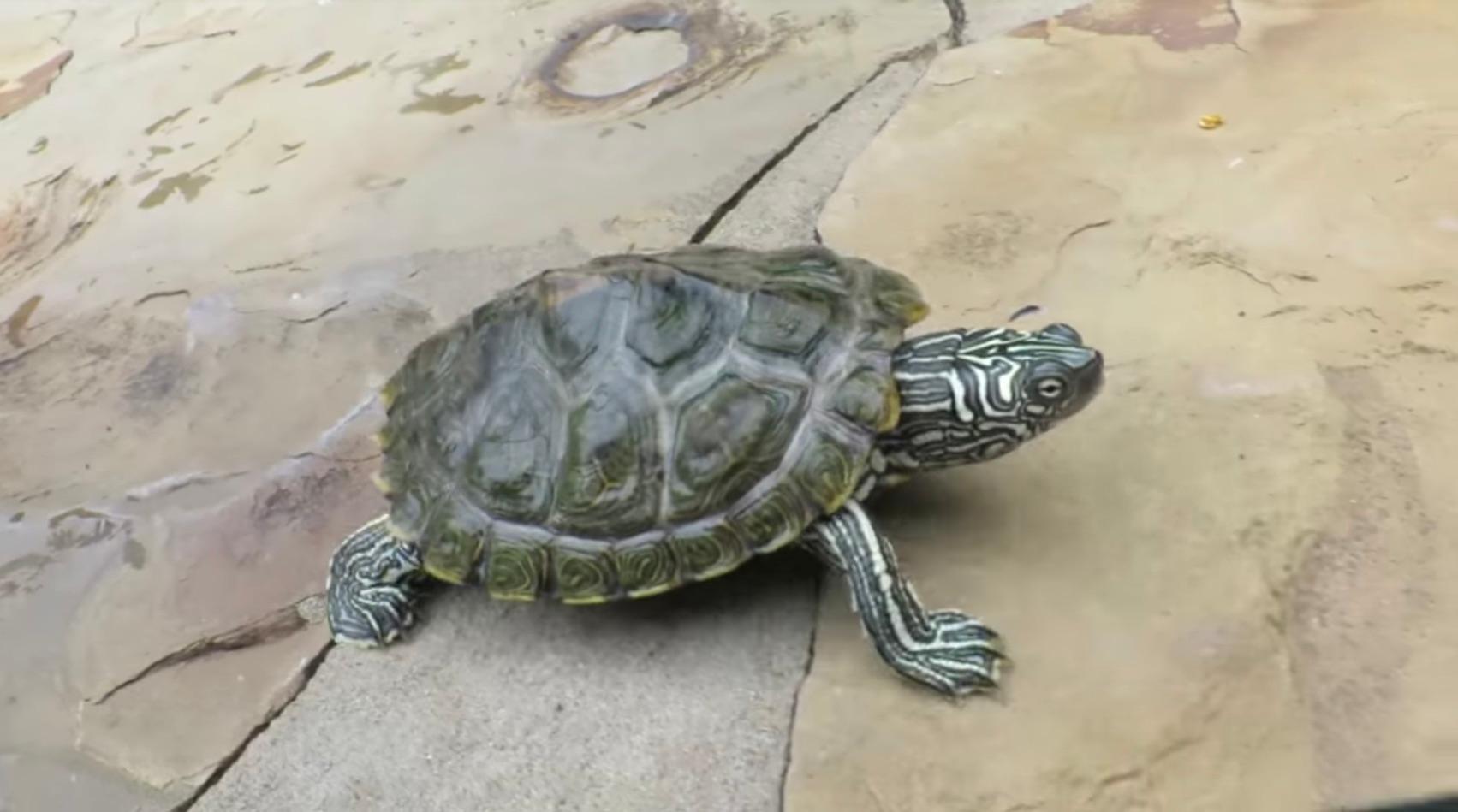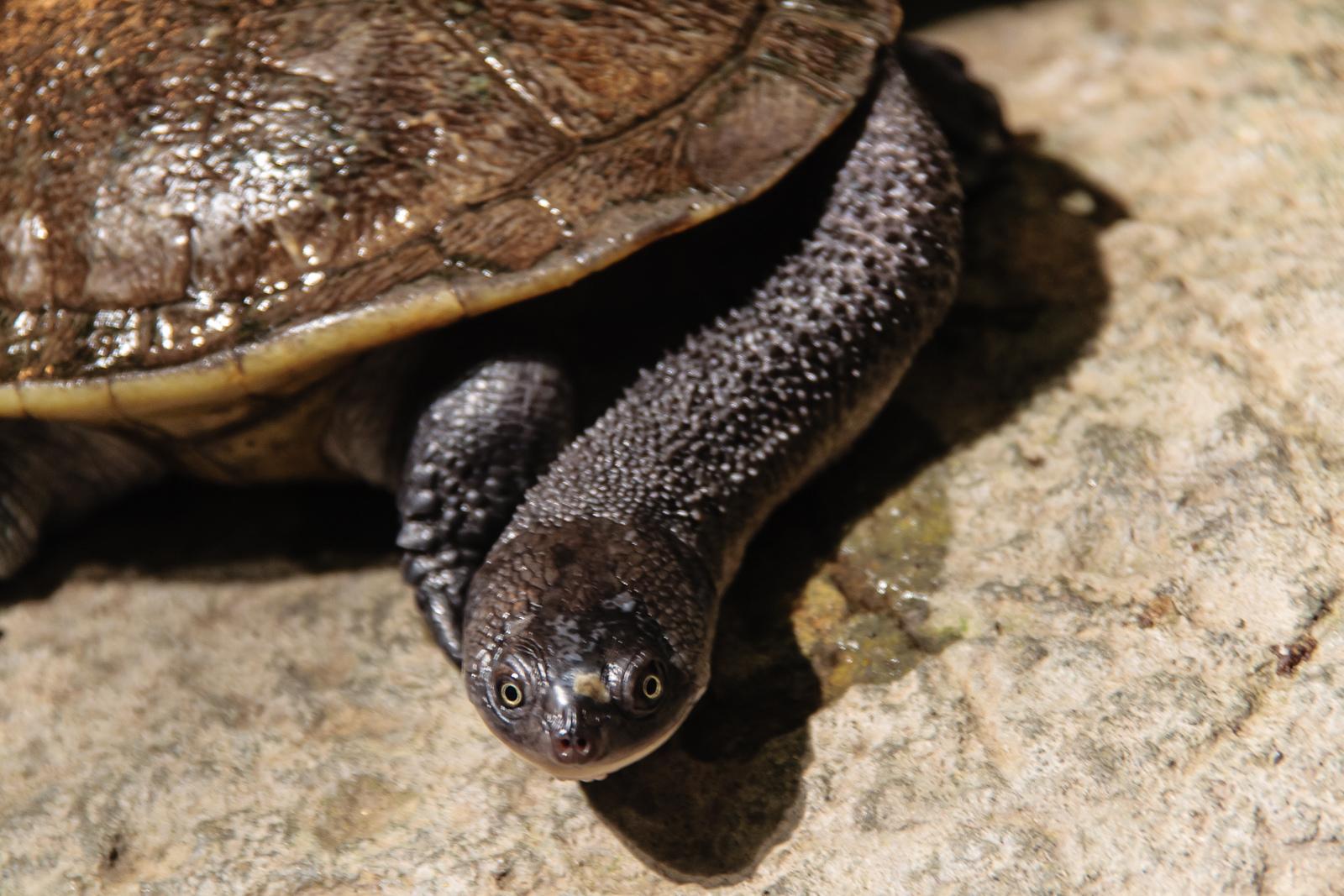10 Delightfully Weird Turtles For World Turtle Day
These oddballs have soft shells, pig noses, and green hair.
Updated May 17 2019, 6:03 p.m. ET
May 23 marks World Turtle Day, a celebration of our favorite slow-moving and sea-loving reptiles. American Tortoise Rescue hosts this faux holiday each year to raise awareness of vulnerable species, encouraging fans to write their legislators about habitat preservation or simply share a "shellfie." Since the day is all about education, we rounded up 10 unusual turtles you might not know. They have strange snouts and shells, and some truly wild respiratory systems.
Check out their unique looks below:
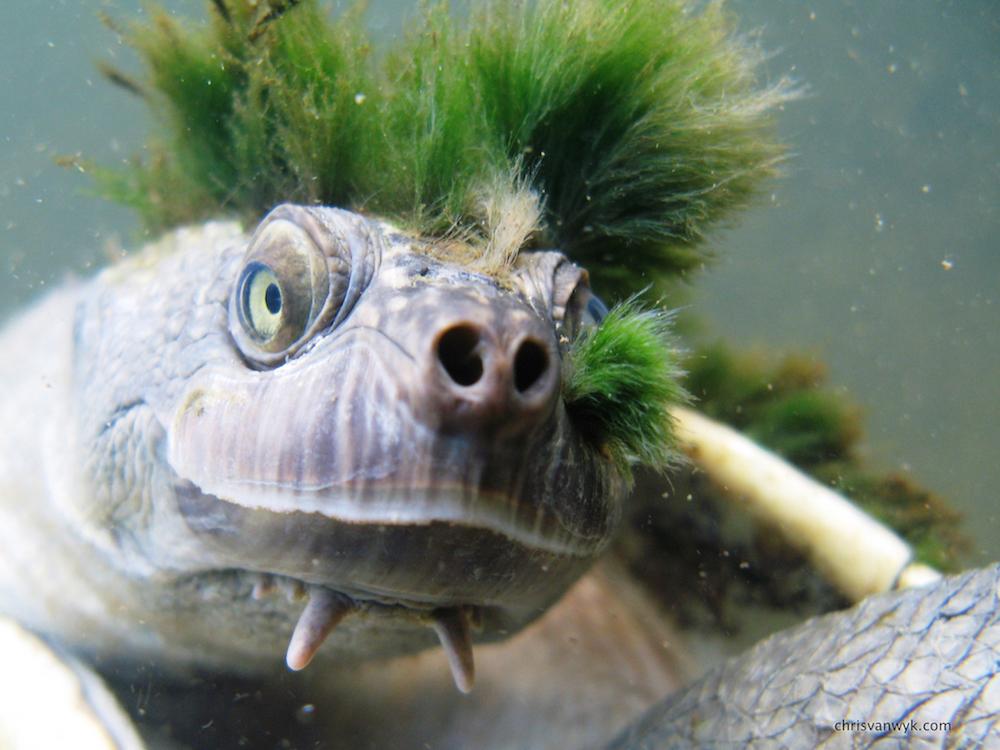
1. Mary River Turtle
This green-haired punk rocker rocketed to viral fame last month, when the Zoological Society of London added it to a list of highly vulnerable reptiles. People were fascinated by the algae growing out of its head, as well as its ability to breathe through its butt. The Mary River turtle has specialized glands located in its cloaca, aka the opening reptiles use for reproduction and excretion, that allows it to breathe underwater for extended periods of time — up to 72 hours! It only lives in the Mary River in Queensland, Australia, and conservationists in the area are currently rallying to save it. You can chip in yourself through their crowdfunding campaign, which aims to raise money for nest protection and research.
2. African Helmeted Turtle
Don't let that silly smile fool you. The African helmeted turtle might wear a perpetual grin, but this little guy can be ruthless. Located throughout the sub-Saharan region, the African helmeted turtle is an omnivore that eats plants, parasites, and larger prey. It hunts in packs, using the combined might of turtle claws to tear at animals it wants to eat. Sometimes it even drags birds underwater. Basically, don't cross this smiling psychopath.
3. Pig-Nosed Turtle
This freshwater turtle has a snout just like a pig, but it doesn't use its nose to sniff out slop. Instead, it sticks its snout just above the water, keeping the rest of its body submerged, so it can swim past predators undetected. The pig-nosed turtle, also called the Fly River turtle, lives in the warm waters of Papua New Guinea, Australia, and Indonesia. It's the last surviving member of the Carettochelyidae family of turtles and considered vulnerable. But groups like the WWF and Piku Conservation Project are working hard to change that.
4. Mata Mata Turtle
"Mata mata" translates to "kill kill" in Spanish, but these turtles are very lazy hunters. Mata mata turtles camouflage themselves on the muddy bottom of a swamp or marsh, waiting for fish to come to them. Once the prey is in range, the turtles "vacuum" it up with their unusually long necks and wide mouths. Mata mata turtles are usually found in the shallow waters of the Amazon, in South American countries ranging from Brazil to Bolivia. They don't move around much, so they should be easy to spot.
5. Alligator Snapping Turtle
Lurking in the wetlands of Florida and Texas is this terrifying turtle, which looks like a cross between a stegosaurus and a tank. The alligator snapping turtle weighs around 175 pounds or more, and can live up to 70 years in the wild. Much like the mata mata, this turtle gobbles up fish and frogs without doing much work. The alligator snapping turtle uses its tongue, which can look a bit like a worm, as a lure to draw food straight into its mouth. The rest of the time, it hangs out in the water solo, seeking land and other turtles only when it's time to nest.

6. Loggerhead Musk Turtle
Loggerhead turtles draw their name from their massive heads. They need those to support their equally massive jaws, which they use to munch on clams and snails. But loggerhead musk turtles come with another special ability: they can skunk up the place if they feel threatened. These turtles are U.S. natives, occupying rivers and springs along the Southeast. You might spot one in the Pearl River basin of Louisiana, or in one of Florida's limestone springs.
7. Spiny Softshell Turtle
We're most familiar with turtles that have hard, bumpy shells. But the spiny softshell turtle carries a smooth and, well, soft shell on its back. It also has a long, thin nose and large webbed feet that help it move quickly on land and sea. The spiny softshell, which lives in the U.S. and Mexico, is big on burrowing. When it feels threatened, it'll bury itself in the sand, leaving only its head poking out. And when it hibernates? The spiny softshell takes to the mud, where it snoozes for half the year.
8. Cagle's Map Turtle
Map turtles come in colorful stripes, ones that wind and break like roads on a map. The Cagle's map turtle is a somewhat uncommon variety that only lives in Texas. It has cream or yellow markings all over its body, and a shell with slightly serrated edges. The female turtles of this species tend to have larger heads, which allow them to dine on mollusks, while the guys have to stick to water bugs.
9. Roti Island Snake-Necked Turtle
We swear this isn't just a snake coiled under a shell. The Roti Island snake-necked turtle is a freshwater species that exists only on the Indonesian island of Rote and East Timor. Its serpentine neck is so long that it can't even retract its head directly into its shell; it has to wind its neck up sideways. This rare reptile is critically endangered, but WCS Indonesia is trying to stabilize the population by reintroducing the turtles to their natural habitat and setting up a breeding center right on Rote.
10. Big-Headed Turtle
This turtle enjoys rugged terrains. It's an excellent climber, one that gravitates towards rocky mountain streams rather than shallow swamps. It also has an enormous head. The big-headed turtle has a skull made of solid bone, making it impossible to withdraw its oversized, triangular head into its shell. Located throughout southeast Asia, the big-headed turtle is the only species in its family, Platysternidae, and its numbers are dwindling. But there's some hope right here in the U.S. The Prospect Park Zoo has overseen two successful hatchings since 2013, which is a minor miracle, since this species is famously difficult to breed in captivity.

